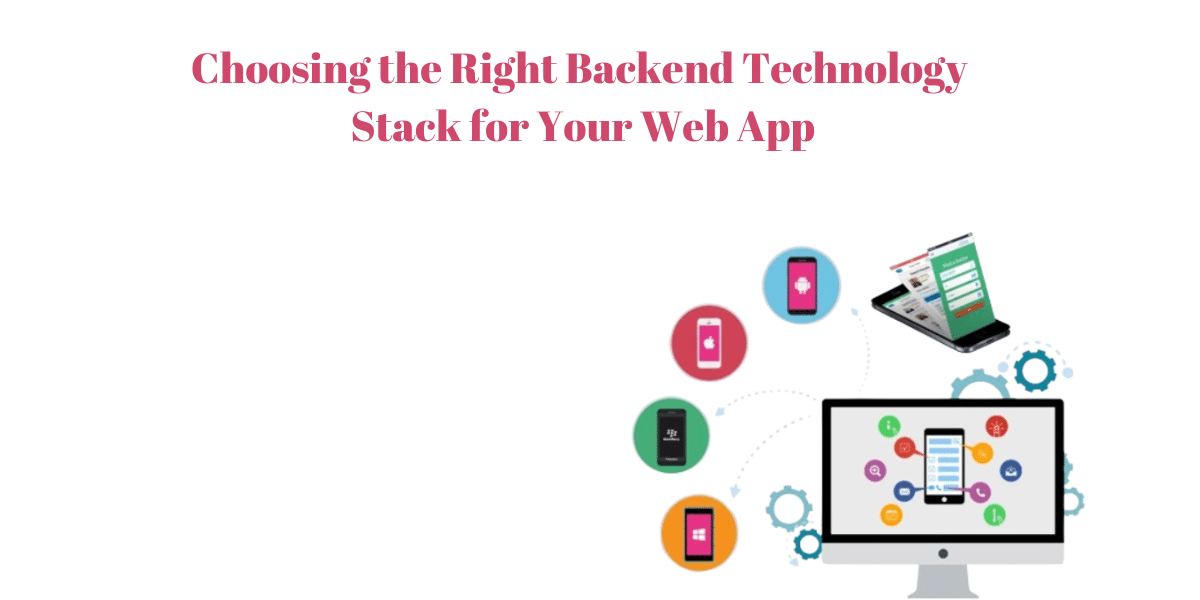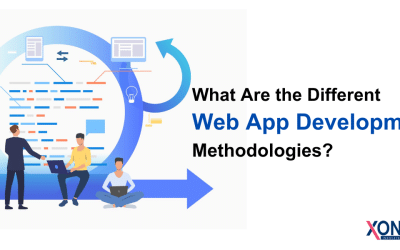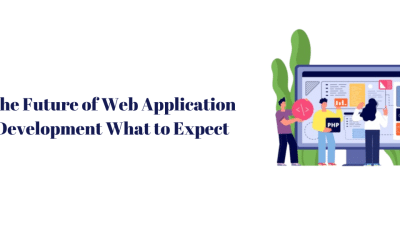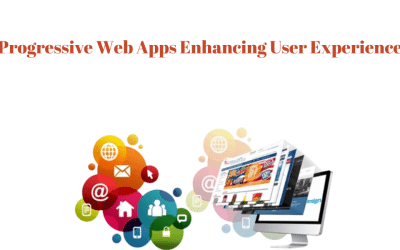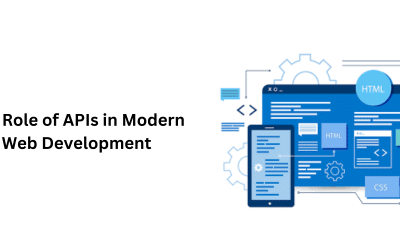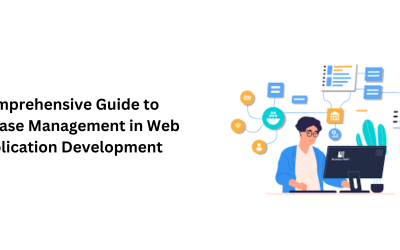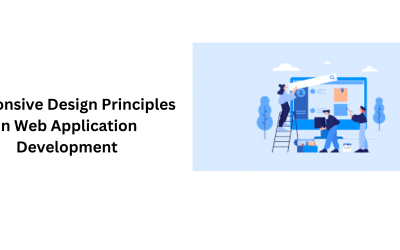Selecting the right backend technology stack for your web app is a pivotal decision that directly impacts its performance, scalability, and overall success. In the rapidly evolving landscape of web development, the abundance of choices can be both empowering and overwhelming.
This crucial decision involves considerations such as the nature of your application, expected user load, security requirements, and future scalability. The backend serves as the engine powering your web app, handling server-side logic, database interactions, and ensuring seamless communication between the server and the frontend.
This introduction sets the stage for a comprehensive exploration of key factors that should influence your decision-making process. From database selection and server-side language to security measures and deployment strategies, navigating the intricacies of backend technology is essential for creating a robust, efficient, and secure foundation for your web application. Join us on a journey through the intricacies of backend web app development technology selection, empowering you to make informed choices that align with your web app’s unique requirements and goals.
Assessing Your Web App Requirements
Assessing your web app requirements is a fundamental step in the backend technology selection process, laying the groundwork for a robust and tailored development approach. Begin by comprehensively understanding the nature of your application and its intended functionality. Define the user experience you aim to deliver and identify any specific features crucial to your app’s success.
Consider the scale of your project, whether it’s a small-scale application or a large-scale enterprise solution, as this factor will significantly influence your backend technology choices. Evaluate the anticipated user traffic and concurrent requests your app is likely to encounter, ensuring that the selected backend technology can seamlessly handle the expected load. Additionally, delve into the data complexity and volume your application will manage, guiding you in selecting an appropriate database system. Assess the real-time requirements of your app, determining if features such as live updates or instant messaging are integral to its functionality.
Security considerations are paramount; identify any regulatory or compliance requirements relevant to your industry and implement backend solutions that prioritize data protection. Understanding the development timeline and budget constraints is equally critical, as it influences the feasibility of adopting certain backend technologies. By conducting a thorough assessment of your web app requirements, you pave the way for an informed decision-making process, aligning your chosen backend technology stack with the specific needs and aspirations of your project.
Scalability Considerations in Backend Technology
Scalability is a cornerstone consideration in the realm of backend technology, playing a pivotal role in the long-term success of web applications. As your user base grows and the demand for your web app increases, the scalability of the chosen backend technology becomes paramount. Opting for a scalable architecture ensures that your application can efficiently handle a growing number of users, traffic, and data without compromising performance.
Horizontal scalability, achieved through strategies like load balancing and distributed computing, allows for the seamless addition of resources, such as servers, to accommodate increased demand. Vertical scalability, on the other hand, involves enhancing the capabilities of existing servers to handle greater loads. It’s imperative to anticipate potential bottlenecks in the backend architecture and proactively implement solutions to mitigate these challenges.
Cloud-based solutions provide an agile and scalable infrastructure, allowing for resource allocation based on current needs while offering the flexibility to adapt to fluctuations in demand. Understanding the scalability requirements specific to your web application development is essential; whether it’s an e-commerce platform experiencing seasonal spikes or a social media platform aiming for continuous growth, your backend technology should align with the scalability demands of your application. This proactive consideration ensures that your web app can seamlessly evolve with user engagement, delivering a consistently optimal experience and safeguarding against performance issues as your digital presence expands.
Performance Optimization for Efficient Backend
Performance optimization is a critical facet of backend development, essential for ensuring the efficiency and responsiveness of web applications. In the dynamic digital landscape, users expect swift and seamless interactions, making it imperative to fine-tune the backend technology stack. Efficient coding practices, such as minimizing redundant queries and optimizing algorithms, contribute significantly to reducing response times. Caching mechanisms play a pivotal role in performance optimization by storing frequently accessed data, thereby mitigating the need for repeated database queries.
Asynchronous processing, through techniques like multithreading or event-driven architectures, enables the backend to handle multiple tasks concurrently, enhancing overall system responsiveness. Choosing the right database indexing strategy and employing query optimization techniques further streamline data retrieval, minimizing latency. Load balancing distributes incoming traffic across multiple servers, preventing bottlenecks and ensuring consistent performance during peak usage.
Regular monitoring and profiling of the backend infrastructure provide insights into performance bottlenecks, enabling developers to identify and address potential issues proactively. Compression of data during transmission and utilizing content delivery networks (CDNs) contribute to faster data delivery, particularly for geographically dispersed users. Implementing performance testing as an integral part of the web development lifecycle allows developers to identify and rectify bottlenecks before deployment, ensuring a smoother end-user experience. In summary, a well-optimized backend not only enhances the speed and efficiency of web applications but also contributes to a positive user experience, fostering user satisfaction and engagement.
Security Measures in Backend Development
Security measures in backend development are paramount to safeguarding sensitive data and ensuring the integrity of web applications. Authentication and authorization mechanisms play a central role in controlling access to backend resources, requiring robust user authentication processes and finely tuned authorization protocols to restrict unauthorized access. Employing encryption protocols, such as HTTPS, protects data during transit, while hashing and salting techniques fortify stored passwords against potential breaches. Regular security audits and vulnerability assessments are essential to identify and address potential weaknesses in the backend infrastructure.
Input validation is crucial in preventing common security threats like SQL injection and cross-site scripting (XSS), ensuring that user inputs are sanitized before interacting with the database. Implementing secure coding practices and adhering to industry-standard security frameworks bolster the overall resilience of the backend against potential exploits. Regularly updating software dependencies and patching known vulnerabilities mitigate the risk of exploitation by malicious actors. Monitoring and logging mechanisms provide real-time insights into potential security incidents, enabling rapid response and mitigation. Implementing a robust firewall configuration safeguards against unauthorized network access, while intrusion detection and prevention systems add an additional layer of defense.
Security awareness training for development teams helps foster a culture of security-conscious coding and practices. In summary, a comprehensive approach to security in backend development encompasses a multifaceted strategy, including access control, encryption, regular audits, secure coding practices, and proactive monitoring, collectively contributing to the fortification of web applications against an evolving landscape of cyber threats.
Database Selection for Your Web App Backend
Choosing the right database for your web app backend is a critical decision that significantly influences the application’s performance, scalability, and data management capabilities. The two main categories to consider are SQL (Structured Query Language) and NoSQL databases. SQL databases, like MySQL and PostgreSQL, are known for their relational structure, providing a robust framework for complex transactions and data integrity.
They are suitable for applications with well-defined schemas and structured data. On the other hand, NoSQL databases, such as MongoDB and Cassandra, offer flexibility in handling unstructured or semi-structured data and are often chosen for their scalability and agility in dealing with rapidly evolving data models. The nature of your application’s data, whether it is primarily structured or requires more flexibility, should guide your database selection.
Additionally, consider factors like transaction requirements, query complexity, and anticipated data volume to ensure the chosen database aligns with your specific needs. It’s crucial to assess the trade-offs between consistency, availability, and partition tolerance (CAP theorem) to make an informed decision.
Beyond these distinctions, evaluate the level of community support, documentation, and scalability features offered by each database system. Carefully weighing these factors ensures that the selected database complements your web app’s requirements, facilitating efficient data management and contributing to the overall success of your backend architecture.
Choosing Between SQL and NoSQL Databases
The choice between SQL (Structured Query Language) and NoSQL databases is a pivotal decision in backend development, influencing the overall performance, scalability, and flexibility of a web application. SQL databases, like MySQL and PostgreSQL, follow a structured, tabular format and are well-suited for applications with complex relationships and transactions.
They provide a reliable framework for ensuring data integrity and adherence to a predefined schema. On the other hand, NoSQL databases, such as MongoDB and Cassandra, offer a more flexible and dynamic approach, accommodating unstructured or semi-structured data.
NoSQL databases excel in handling large volumes of data, scalability, and agility in adapting to evolving data models. The choice between SQL and NoSQL hinges on the nature of the application, with SQL databases being a robust choice for applications with well-defined structures and rigorous transaction requirements, while NoSQL databases are preferred for scenarios where data flexibility and scalability are paramount.
Factors such as the expected data volume, query complexity, and the need for horizontal scaling play a crucial role in this decision. It’s essential to evaluate trade-offs between consistency, availability, and partition tolerance (CAP theorem) based on the application’s specific requirements. Ultimately, a careful consideration of the data model, scalability needs, and the trade-offs between the two database types ensures that the chosen database aligns seamlessly with the overall objectives and functionality of the web application.
Server-Side Language Selection Criteria
Selecting the appropriate server-side language is a pivotal decision in backend development, influencing the performance, maintainability, and scalability of a web application. The choice often depends on several key criteria. First and foremost, consider the nature of the project and its specific requirements.
Different languages have distinct strengths, with languages like Python excelling in readability and ease of use, while languages like Java offer robustness and portability. Assess the availability of libraries and frameworks that align with the functionalities needed for the application, as these can significantly expedite development. Consider the level of community support and the availability of skilled developers, as a vibrant community can contribute to ongoing support, troubleshooting, and enhancements.
Additionally, evaluate the scalability of the chosen language, ensuring it can handle the anticipated growth in both codebase and user interactions. Integration capabilities with other technologies, databases, and third-party services are crucial for seamless collaboration within the broader tech stack. Furthermore, factors such as security features, runtime performance, and platform independence should be considered.
Ultimately, the selection should align with the development team’s expertise and the project’s long-term goals. By weighing these criteria thoughtfully, developers can make an informed decision that ensures the chosen server-side language optimally supports the needs of the web application, fostering efficiency, maintainability, and scalability throughout its lifecycle.
Frameworks: Streamlining Backend Development
Frameworks play a pivotal role in streamlining backend web app development, providing developers with pre-built structures, libraries, and tools that accelerate the creation of robust and scalable web applications. The choice of a backend framework significantly influences development speed, code organization, and maintainability.
Popular frameworks like Django (Python), Ruby on Rails (Ruby), and Express.js (JavaScript/Node.js) encapsulate best practices, enforcing a structured approach that simplifies common tasks such as routing, database interactions, and user authentication. By offering standardized patterns, frameworks contribute to code consistency and readability, facilitating collaboration within development teams. Frameworks also often come with built-in security features, helping developers adhere to best practices without extensive manual implementation. Furthermore, they streamline error handling and debugging, enhancing the overall development experience. The selection of a framework should align with the project’s requirements and the developer’s familiarity with the chosen programming language.
Assessing factors like community support, documentation, and the ecosystem of available plugins or extensions is crucial for long-term project viability. Whether opting for a full-stack framework or a micro-framework, the decision should balance ease of development with the flexibility to meet the specific needs of the web application. In essence, backend frameworks act as accelerators in the development lifecycle, empowering developers to focus on application logic and features rather than grappling with repetitive and time-consuming tasks, ultimately leading to more efficient, maintainable, and scalable backend solutions.
Cloud-Based Backend Solutions: Pros and Cons
Cloud-based backend solutions have become integral in modern web development, offering a myriad of benefits alongside certain considerations. On the positive side, scalability is a primary advantage, as cloud platforms enable developers to effortlessly scale resources up or down based on application demands, accommodating fluctuations in user traffic and data volume. Cost efficiency is another key pro, with the pay-as-you-go model allowing businesses to optimize expenses by only paying for the resources they consume.
Cloud providers often offer a global network of data centers, facilitating low-latency access for users worldwide. Additionally, cloud services typically provide a range of managed services, reducing the operational burden on development teams for tasks like database management, caching, and load balancing. However, there are cons to consider. Dependence on third-party providers raises concerns about data security and privacy, necessitating robust encryption, access controls, and compliance measures. Downtime and service disruptions, though rare, can occur, impacting the availability of applications. Vendor lock-in is a consideration, as migrating away from a specific cloud provider may pose challenges due to proprietary technologies and services.
Despite these considerations, the overall advantages of cloud-based backend solutions often outweigh the drawbacks, providing a flexible and scalable infrastructure that empowers developers to focus on building and improving their applications rather than managing complex backend infrastructure. Careful consideration of these pros and cons is essential in determining whether a cloud-based approach aligns with the specific requirements and goals of a web application.
Microservices Architecture: Is It Right for Your Web App?
The adoption of a microservices architecture represents a significant paradigm shift in backend development, and determining its suitability for a web app requires careful consideration of various factors. Microservices involve breaking down an application into smaller, independent services that communicate through well-defined APIs, enabling development teams to work on different components concurrently.
One of the primary advantages is scalability, as each microservice can be scaled independently based on its specific demand. This architecture also facilitates flexibility, allowing teams to choose the most suitable technology stack for each service, promoting innovation and adaptability. However, the transition to microservices introduces complexities in terms of orchestration, deployment, and inter-service communication. The use of distributed systems requires robust solutions for handling failures and ensuring consistency across services. Moreover, microservices may incur increased operational overhead due to managing multiple services and their dependencies. Considerations such as the size and complexity of the application, the development team’s expertise, and the anticipated scalability requirements are crucial.
Microservices are well-suited for large, complex applications with diverse functionalities and evolving requirements but may introduce unnecessary overhead for simpler projects. Ultimately, the decision to adopt a microservices architecture depends on the specific needs of the web app, the development team’s capabilities, and the long-term goals of the project, with careful assessment ensuring that the chosen architecture aligns with the application’s unique requirements.
API Design and Integration in Backend Development
API design and integration play a pivotal role in the success of backend development, enabling seamless communication between different components of a web application and facilitating interactions with external services. Effective API design involves creating interfaces that are intuitive, consistent, and adhere to industry best practices, promoting ease of use for developers and third-party integrators.
A well-designed API abstracts the underlying complexities of the backend, providing a standardized way for different software components to interact. RESTful APIs, utilizing HTTP methods for communication, and GraphQL, offering more flexibility in data retrieval, are common approaches with distinct advantages based on specific use cases. Integration with external services, such as payment gateways or social media platforms, demands careful consideration of authentication methods, data formats, and error handling to ensure a robust and secure connection. Versioning strategies are essential to maintain compatibility as APIs evolve over time.
Thorough documentation of APIs is crucial for developers using the backend services, offering clear insights into endpoints, request and response formats, and authentication requirements. Testing, both at the unit and integration levels, is vital to validate the functionality and reliability of the API. Additionally, monitoring tools assist in identifying performance issues or potential bottlenecks in the integration process. Successful API design and integration empower developers to build modular, interoperable, and extensible applications, fostering collaboration between different services and ensuring the scalability and longevity of the backend architecture.
Considering Real-Time Functionality in Backend
Considering real-time functionality in backend development is essential for applications that require instant updates, collaborative features, or live interactions. Real-time capabilities enable immediate communication between the server and clients, ensuring that users receive the latest information without the need for manual refreshes.
WebSocket is a common technology for real-time communication, providing a full-duplex communication channel that facilitates bidirectional data flow between clients and servers. When incorporating real-time features, developers must carefully consider the potential impact on server performance and scalability.
Efficient handling of concurrent connections, optimizing data transfer, and minimizing latency are critical factors in ensuring a responsive real-time experience. The choice between using WebSocket directly or leveraging frameworks like Socket.io depends on the specific requirements and compatibility with the chosen backend technology. Database considerations become crucial in real-time scenarios, necessitating the use of technologies like change data capture to track modifications efficiently.
Integrating real-time functionality often involves creating event-driven architectures, where the backend responds to events triggered by user actions or external triggers, disseminating updates to connected clients. Whether implementing chat applications, live notifications, or collaborative editing features, the incorporation of real-time functionality enhances user engagement and overall user experience. By carefully addressing the challenges associated with real-time communication, developers can create backend architectures that deliver seamless, instantaneous interactions, meeting the dynamic expectations of users in a variety of applications, from messaging platforms to collaborative tools.
Load Balancing for Backend Performance
Load balancing is a critical strategy in backend development aimed at optimizing performance and ensuring the seamless operation of web applications, particularly in scenarios of varying user traffic and resource demands. Load balancing distributes incoming network traffic across multiple servers or computing resources, preventing any single server from becoming overwhelmed and thereby enhancing both reliability and responsiveness.
There are various load balancing algorithms, including round-robin, least connections, and weighted distribution, each catering to specific use cases. By efficiently allocating incoming requests across multiple servers, load balancing contributes to improved scalability, fault tolerance, and overall system availability. Additionally, load balancing plays a crucial role in mitigating the risk of downtime and performance bottlenecks, particularly during peak usage periods. Modern load balancing solutions often incorporate health checks to monitor the status of individual servers, automatically rerouting traffic away from underperforming or faulty servers to maintain a consistent user experience.
Load balancing is integral in cloud environments where dynamic scaling is prevalent, allowing for the automatic adjustment of resources based on real-time demand. Whether implemented through hardware appliances, software-based solutions, or integrated into cloud platforms, load balancing is a fundamental component of backend architecture, optimizing resource utilization and ensuring that web applications deliver a responsive and reliable experience to users, even in the face of varying workloads and traffic patterns.
Monitoring and Logging Tools for Backend Maintenance
Monitoring and logging tools are indispensable in backend development, providing crucial insights into the performance, health, and security of a web application. These tools serve as a proactive mechanism to detect and address potential issues, ensuring optimal functionality and user experience.
Monitoring tools track various metrics such as server CPU usage, memory consumption, network latency, and request/response times, offering real-time visibility into the backend infrastructure. Comprehensive monitoring helps in identifying performance bottlenecks, predicting potential failures, and optimizing resource utilization. Logging tools, on the other hand, record events, errors, and transactions, creating a detailed trail of backend activities. Effective logging facilitates debugging and troubleshooting, allowing developers to trace the flow of execution and identify the root causes of issues. Centralized logging systems aggregate logs from multiple sources, aiding in comprehensive analysis and reporting. The integration of both monitoring and logging tools enables proactive maintenance, helping development teams identify and resolve issues before they impact users.
Popular tools like Prometheus, Grafana, ELK Stack (Elasticsearch, Logstash, Kibana), and Splunk are commonly employed in backend maintenance workflows. Establishing proper alerting mechanisms based on monitoring metrics allows for immediate responses to critical issues. Continuous refinement of monitoring and logging configurations ensures that backend systems remain resilient, performant, and adaptable to changing circumstances, ultimately contributing to a robust and reliable web application.
Budgeting for Backend Development Costs
Budgeting for backend development costs is a critical aspect of planning a web application project, encompassing various factors that contribute to the overall expenses. Firstly, the choice of backend technology stack, including servers, databases, and frameworks, influences costs significantly. Proprietary solutions may incur licensing fees, while open-source alternatives often involve customization and support costs. Infrastructure costs, such as cloud hosting or server maintenance, play a substantial role, with considerations for scalability and anticipated user traffic impacting pricing models.
Development team costs, including salaries, benefits, and training, constitute a substantial portion of the budget. Complexity in backend architecture, integration with external services, and the need for specialized skills can contribute to higher development costs. Additionally, budgeting should account for security measures, including encryption, access controls, and compliance with industry standards, to safeguard against potential breaches. Continuous maintenance, updates, and support contribute to the ongoing operational costs of backend development. It is essential to allocate resources for thorough testing, quality assurance, and potential revisions during the development lifecycle. Unforeseen challenges, such as scalability issues or changing project requirements, should also be factored into the budget.
Regular monitoring and optimization to enhance performance may involve ongoing expenses. Effective budgeting requires a detailed understanding of project requirements, industry benchmarks, and potential risks, ensuring that the allocated funds align with the project’s objectives and constraints. By comprehensively considering these factors, web app development teams can create realistic budgets that support the successful implementation and maintenance of a robust backend system for their web application.
Community Support and Documentation in Backend Technologies
Community support and documentation are pivotal considerations in selecting a backend technology for web development, significantly influencing the success and longevity of a project. An active and engaged community provides a valuable resource for developers, offering forums, discussion groups, and online communities where individuals can seek assistance, share insights, and troubleshoot issues.
Robust community support fosters a collaborative environment, enabling developers to leverage collective knowledge and solutions. A technology stack with a vibrant community is more likely to receive regular updates, security patches, and new features, ensuring that the backend remains robust and adaptable to evolving industry standards. Documentation is equally crucial, serving as a comprehensive reference for developers to understand the intricacies of the technology, its features, and best practices. Well-documented backend technologies accelerate the learning curve for developers, streamline onboarding processes, and contribute to more efficient development workflows. Documentation should include clear examples, code samples, and use cases to assist developers in implementing features and troubleshooting challenges effectively. Regularly updated and well-maintained documentation reflects a commitment to transparency and user-friendliness, enhancing the overall developer experience.
When evaluating backend technologies, assessing the quality and accessibility of community support and documentation ensures that development teams can navigate challenges, stay informed about updates, and make informed decisions that align with the project’s goals and requirements. Ultimately, the strength of community support and the clarity of documentation contribute to the resilience and sustainability of the chosen backend technology in the ever-evolving landscape of web development.
Compatibility with Frontend Frameworks
Compatibility with frontend frameworks is a crucial aspect of selecting a backend technology for web development, as the synergy between the two layers is essential for building seamless and responsive applications. The frontend and backend components must work harmoniously to deliver a cohesive user experience. Ensuring compatibility involves evaluating how well the chosen backend technology integrates with popular frontend frameworks, such as React, Angular, or Vue.js.
The backend should provide robust support for the APIs and communication protocols required by the frontend, allowing for efficient data exchange and real-time updates. Standardized practices like RESTful APIs or GraphQL enhance interoperability between the frontend and backend, simplifying the development process. Furthermore, a backend technology that aligns with the conventions and patterns of the chosen frontend framework promotes consistency in code structure, making it easier for developers to collaborate and transition between frontend and backend tasks seamlessly.
Consideration of the full technology stack, encompassing both frontend and backend technologies, ensures a cohesive and streamlined web development workflow. Compatibility not only facilitates smooth data flow and communication but also supports the creation of dynamic, interactive, and feature-rich user interfaces. By prioritizing compatibility between frontend and backend technologies, development teams can enhance collaboration, reduce integration complexities, and deliver robust web applications that seamlessly integrate the user interface with the underlying functionality.
Future-Proofing Your Backend Technology Stack
Future-proofing your backend technology stack is a strategic imperative in the ever-evolving landscape of web development, ensuring that the chosen technologies remain relevant, adaptable, and sustainable over time. Anticipating future trends and industry shifts is crucial, prompting the selection of technologies with active development communities, ongoing support, and a commitment to staying abreast of emerging technologies.
Embracing scalable and modular architectures, such as microservices, facilitates the integration of new features and technologies without necessitating a complete overhaul of the existing system. Open-source technologies often offer a higher degree of flexibility, allowing developers to customize and extend functionalities as needed. Moreover, investing in technologies that prioritize interoperability and adherence to industry standards fosters a future-ready infrastructure, easing the integration of new tools and services. Regularly updating dependencies and staying informed about security patches are integral components of future-proofing, safeguarding the backend against vulnerabilities.
Additionally, considering the scalability and performance implications of potential future growth ensures that the backend technology can accommodate increased user loads and data volumes. The ability to adopt new programming languages, frameworks, and paradigms aligns with the dynamic nature of technology evolution. By implementing a proactive approach to technology selection, development teams can position their backend stack to withstand the test of time, accommodating changes in user expectations, industry standards, and technological advancements, ultimately ensuring the longevity and resilience of the web application.
Mobile App Integration with Backend Services
Mobile app integration with backend services is a critical component in delivering a seamless and interconnected user experience. The backend serves as the foundation for data storage, business logic, and user authentication, while the mobile app acts as the user interface, interacting with these backend services.
Effective integration ensures real-time data synchronization, enabling users to access and interact with up-to-date information on their mobile devices. APIs (Application Programming Interfaces) play a central role in this integration, defining the rules and protocols for communication between the mobile app and the backend. RESTful APIs or GraphQL are commonly employed for efficient data exchange. User authentication and authorization mechanisms are crucial to ensure secure access to backend services, protecting sensitive data and user privacy. Push notifications further enhance user engagement by enabling timely updates and alerts. Optimizing data transfer, considering bandwidth constraints on mobile networks, contributes to faster app performance. Scalability of backend services is paramount to accommodate the diverse and potentially large user base of mobile applications.
Comprehensive testing, including performance testing and security assessments, is essential to identify and address potential issues before deployment. Mobile app integration should be designed with an understanding of the user’s context, ensuring a smooth transition between online and offline modes. By prioritizing robust and efficient integration between the mobile app and backend services, development teams can create responsive, feature-rich, and user-friendly mobile applications that leverage the full capabilities of both the frontend and backend components.
Data Encryption and Compliance in Backend Systems
Data encryption and compliance play integral roles in ensuring the security and legal adherence of backend systems, particularly in the handling of sensitive information. Encryption is a fundamental measure to protect data both in transit and at rest. Utilizing robust encryption algorithms, such as AES, safeguards data from unauthorized access or interception. This is especially critical in scenarios involving personal or financial information, where confidentiality is paramount.
Compliance with data protection regulations, such as GDPR or HIPAA, necessitates the implementation of encryption as part of broader security measures. Encrypting data at rest involves securing information stored in databases or file systems, preventing unauthorized access even if physical servers are compromised. Encryption in transit ensures that data transmitted between servers, services, or client devices is safeguarded against interception. Compliance requirements often mandate specific encryption standards and practices to protect sensitive data, and adherence to these regulations is essential to avoid legal repercussions.
Furthermore, compliance encompasses broader considerations, such as access controls, audit trails, and data retention policies. Establishing and enforcing access controls restricts data access to authorized individuals, reducing the risk of unauthorized usage or breaches. Implementing robust audit trails facilitates monitoring and tracking data access and modifications, aiding in compliance audits and incident response.
Data retention policies ensure that information is stored for the required duration as per regulations and then securely disposed of when no longer needed, minimizing privacy risks. In summary, the integration of data encryption and compliance measures into backend systems is imperative for fostering a secure and legally sound environment, instilling trust among users and ensuring the responsible handling of sensitive information.
Containerization and Virtualization in Backend Deployment
Containerization and virtualization are transformative technologies in backend deployment, streamlining the management and scalability of web applications. Containerization, exemplified by Docker, allows developers to encapsulate applications and their dependencies into lightweight, portable containers. These containers include everything needed to run an application, from code to libraries, ensuring consistency across various environments.
Containers provide isolation, making applications agnostic to the underlying infrastructure and simplifying deployment, as they can be seamlessly moved between development, testing, and production environments. Container orchestration tools like Kubernetes further enhance scalability and manageability, automating the deployment, scaling, and maintenance of containerized applications. Virtualization, on the other hand, involves creating virtual instances of entire operating systems, enabling multiple applications to run on a single physical server. Technologies like VMware and VirtualBox facilitate the deployment of virtual machines, each hosting a complete OS and application stack.
While virtualization offers flexibility, it tends to be more resource-intensive compared to containerization. Both containerization and virtualization contribute to efficient resource utilization, enabling better isolation, scalability, and ease of management in backend deployment. The choice between them depends on factors like resource efficiency, portability requirements, and the level of isolation needed for the application. Whether leveraging containers or virtual machines, these technologies have become integral in modern backend deployment strategies, empowering developers to build and deploy applications with increased speed, consistency, and flexibility across diverse environments.
Choosing Between Monolithic and Modular Backend Architecture
Choosing between monolithic and modular backend architecture is a pivotal decision that significantly shapes the development, scalability, and maintenance of a web application. A monolithic architecture consolidates all components of an application into a single, tightly integrated unit, simplifying development but potentially becoming unwieldy as the application grows. In contrast, modular or microservices architecture decomposes the application into smaller, independent services, each responsible for specific functionalities.
The choice between the two depends on the project’s complexity, scalability requirements, and development team dynamics. Monolithic architectures are well-suited for simpler projects, where all functionalities are closely interrelated, and the ease of development and deployment outweighs the need for scalability and flexibility. Modular architectures shine in complex, large-scale applications, promoting agility, scalability, and independent development of services.
Microservices facilitate easier maintenance, updates, and scaling of individual components, but introduce challenges in terms of orchestration, inter-service communication, and potential increases in operational complexity. The decision hinges on factors such as the project’s size, the team’s familiarity with the chosen architecture, and the long-term scalability requirements. Striking a balance between the simplicity of a monolithic architecture and the flexibility of a modular one requires careful consideration of the specific needs and goals of the web application, ensuring that the chosen backend architecture aligns with the project’s current and future demands.
Continuous Integration and Deployment in Backend Workflow
Continuous Integration (CI) and Continuous Deployment (CD) are integral practices in the backend workflow, fostering efficiency, reliability, and rapid development cycles. Continuous Integration involves the frequent integration of code changes into a shared repository, allowing development teams to detect and address issues early in the development process. Automated testing plays a crucial role in CI, ensuring that new code changes do not introduce regressions or break existing functionalities.
Continuous Deployment takes the CI process further by automating the deployment of code changes to production environments, minimizing manual intervention and reducing the time between code completion and deployment. These practices collectively form a Continuous Integration and Continuous Deployment (CI/CD) pipeline, streamlining the development workflow. CI/CD pipelines improve collaboration among development teams, enhance code quality, and enable faster time-to-market for new features or updates. Automated testing and deployment reduce the risk of errors in production, ensuring a more reliable and stable application.
Popular CI/CD tools such as Jenkins, Travis CI, or GitLab CI facilitate the automation of build, test, and deployment processes. The adoption of CI/CD practices is particularly beneficial in backend development, where changes to the codebase can have far-reaching consequences. By implementing CI/CD in the backend workflow, development teams can maintain a high level of code quality, accelerate development cycles, and deliver reliable, scalable, and up-to-date backend services for web applications.
Evaluating the Learning Curve for Backend Technologies
Evaluating the learning curve for backend technologies is a crucial aspect when making decisions in web development, impacting the efficiency and proficiency of development teams. The learning curve refers to the time and effort required for developers to become proficient in a specific technology stack.
Factors influencing the learning curve include the complexity of the chosen backend language, framework, or database system, as well as the team’s prior experience and familiarity with related technologies. Established technologies with extensive documentation and strong community support often have a gentler learning curve, as developers can leverage available resources and best practices. Newer or more specialized technologies may present steeper learning curves due to limited documentation and a smaller community. The availability of educational resources, tutorials, and training materials can significantly ease the learning process.
Additionally, the alignment of a technology with the team’s existing skill set and the overall project requirements influences how quickly developers can adapt to and effectively use the backend technology. Striking a balance between leveraging innovative technologies and considering the learning curve is crucial for project success. A well-managed learning curve allows for faster development cycles, reduced error rates, and improved code quality. By evaluating the learning curve comprehensively, development teams can make informed decisions, selecting backend technologies that align with their expertise and project goals while considering the optimal balance between familiarity and innovation.
The Key Takeaway
In conclusion, the selection of backend technologies for web development is a multifaceted decision that profoundly influences the performance, scalability, and maintainability of applications. The evaluation process involves considerations such as the nature of the project, scalability requirements, community support, documentation, and the learning curve.
Balancing innovation with the team’s expertise is essential for successful backend architecture. Whether choosing between monolithic and modular architectures, evaluating mobile app integration, or considering containerization and virtualization, a thorough understanding of project requirements and technology landscapes is paramount.
Continuous integration and deployment practices, along with monitoring tools, contribute to the reliability and efficiency of backend workflows. Future-proofing considerations ensure that the selected technologies remain adaptable and resilient in the ever-evolving tech ecosystem. By navigating these considerations thoughtfully, development teams can create robust, scalable, and efficient backend systems that underpin the success of web applications in the dynamic digital landscape.

